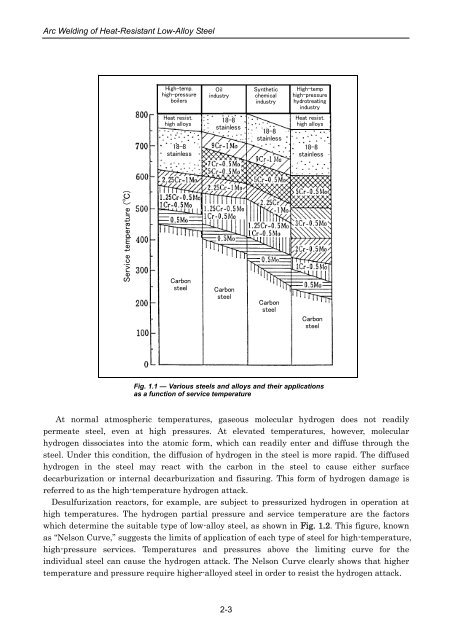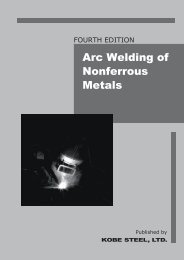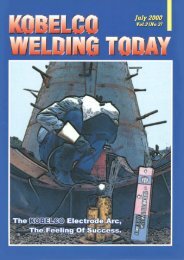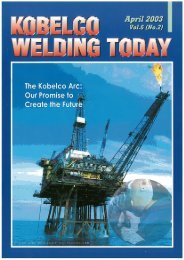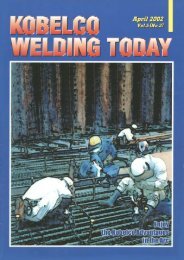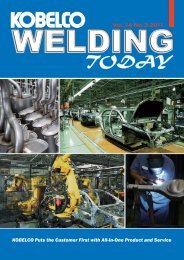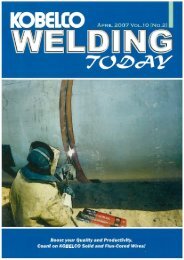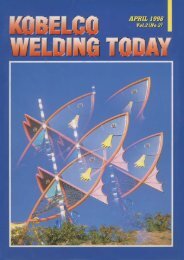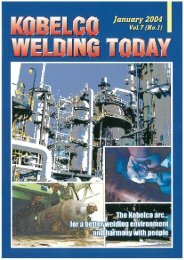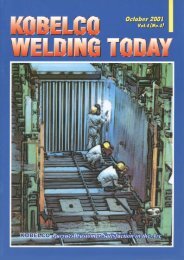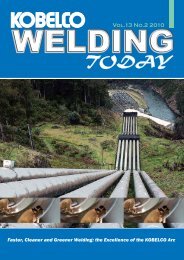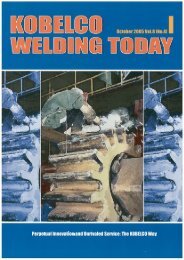Arc Welding of Specific Steels and Cast Irons
Arc Welding of Specific Steels and Cast Irons
Arc Welding of Specific Steels and Cast Irons
You also want an ePaper? Increase the reach of your titles
YUMPU automatically turns print PDFs into web optimized ePapers that Google loves.
<strong>Arc</strong> <strong>Welding</strong> <strong>of</strong> Heat-Resistant Low-Alloy Steel<br />
High-temp.<br />
high-pressure<br />
boilers<br />
Oil<br />
industry<br />
Synthetic<br />
chemical<br />
industry<br />
High-temp<br />
high-pressure<br />
hydrotreating<br />
industry<br />
Heat resist.<br />
high alloys<br />
Heat resist.<br />
high alloys<br />
18-8<br />
stainless<br />
18-8<br />
stainless<br />
18-8<br />
stainless<br />
18-8<br />
stainless<br />
Service temperature (℃)<br />
Carbon<br />
steel<br />
Carbon<br />
steel<br />
Carbon<br />
steel<br />
Carbon<br />
steel<br />
Fig. 1.1 — Various steels <strong>and</strong> alloys <strong>and</strong> their applications<br />
as a function <strong>of</strong> service temperature<br />
At normal atmospheric temperatures, gaseous molecular hydrogen does not readily<br />
permeate steel, even at high pressures. At elevated temperatures, however, molecular<br />
hydrogen dissociates into the atomic form, which can readily enter <strong>and</strong> diffuse through the<br />
steel. Under this condition, the diffusion <strong>of</strong> hydrogen in the steel is more rapid. The diffused<br />
hydrogen in the steel may react with the carbon in the steel to cause either surface<br />
decarburization or internal decarburization <strong>and</strong> fissuring. This form <strong>of</strong> hydrogen damage is<br />
referred to as the high-temperature hydrogen attack.<br />
Desulfurization reactors, for example, are subject to pressurized hydrogen in operation at<br />
high temperatures. The hydrogen partial pressure <strong>and</strong> service temperature are the factors<br />
which determine the suitable type <strong>of</strong> low-alloy steel, as shown in Fig. 1.2. This figure, known<br />
as “Nelson Curve,” suggests the limits <strong>of</strong> application <strong>of</strong> each type <strong>of</strong> steel for high-temperature,<br />
high-pressure services. Temperatures <strong>and</strong> pressures above the limiting curve for the<br />
individual steel can cause the hydrogen attack. The Nelson Curve clearly shows that higher<br />
temperature <strong>and</strong> pressure require higher-alloyed steel in order to resist the hydrogen attack.<br />
2-3


